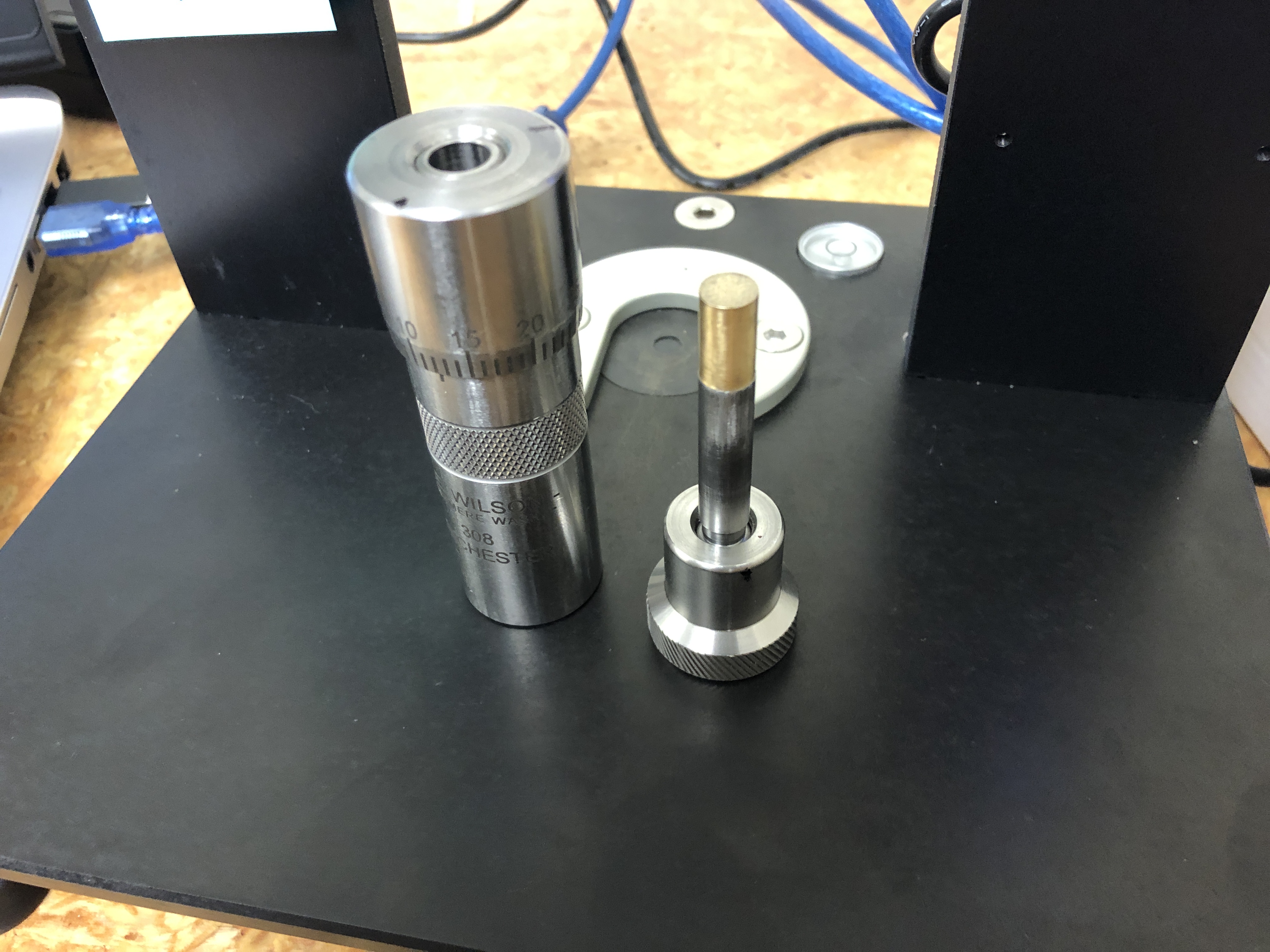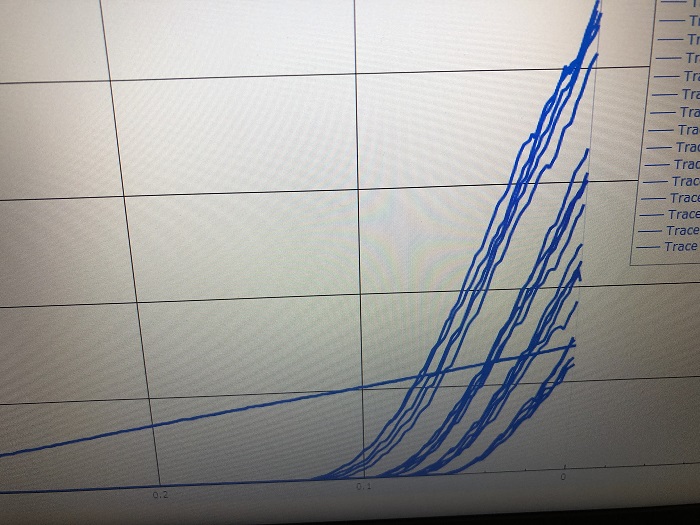CASE VOLUME SORTING WITH AMP PRESS?
Quick easy and dry
Alex Findlay - 29/07/2021
Sorting
cases by volume using an AMP Press.
Hypothesis:
That as cases vary
in volume, the height of the powder column will also vary, and that this
difference will be detectable on the X Axis of an AMP Press display.
Equipment:
·
AMP
Press
·
Modified
plunger to suit inline chamber seating die.
·
V3
auto trickler and A&D FZ-300i scale
·
7”
powder drop tube
Proof of concept
Technique:
The seating
stem of a 308W inline seating die was modified so that it was able to extend
into the case mouth. The extension was turned to 0.30”, again, to allow it to
enter the case mouth.
Prototype extension mod shown in brass. A
production version could be a caliber-specific single steel stem, turned to
correct diameters.
We used one
single 308W case for all tests. This case was charged, measured, emptied and
re-charged with various weights of powder. After each charging, the case was
inserted into the die and the modified stem was gently lowered to touch the top
of the powder column. The die was adjusted to allow approx 0.10” of travel,
depending on the charge, before bottoming out at the "find X zero” point.
Results:
We
initially used Varget, using a funnel to tip each charge into the case. We got
erratic results. Varget is a very coarse-grained powder. We also tested Hodgdon
CFE 223, which is a very fine powder. It gave more consistent results, but it
tended to stick to the bottom of the modified seating stem. We then used
Benchmark ll, which is a relatively fine-grained stick powder. It gave
promising results and did not stick. With charges coming up to the
neck/shoulder junction, powder height changes were visible to the naked eye
depending on how the charge was poured into the funnel. We then swapped to
using a 7” drop tube, and instantly results became much more repeatable.
The
following photo shows four different charge weights of Benchmark ll, using the
drop tube:
The sloping
trace from left to right was made using the spring-loaded simulation die. This
gives a reference point for all the other traces. From the left, the first set
of five traces shows 47.5 Gr. of Benchmark ll. The second set shows five traces
of 47.0 Gr., the third set shows five x 46.5 Gr. and the right-hand set shows
five x 46 Gr.
Conclusion:
When the
correct technique is used, a resolution of much better than 0.5 Gr. is
achievable using the AMP Press to measure case volume. Resolution in this proof-of-concept
test is actually better than 0.25 Gr. Note that this method of testing is only
valid if powder charges are sufficiently accurate and uniform.
Because
this test demonstrates that different charge weights show measurable powder
column height variations in the same case, the corollary
is that if multiple cases are charged with the same charge weight, any
variation in charge height indicates variable case volume. This will allow for
very accurate case sorting. Users could choose to either sort each new batch of
cases as a one-time process, or possibly test each reload. That is feasible
because the technique is quick, easy and dry.
Where to
from here?
We believe
that further testing will allow us to optimize our techniques. We have also yet
to test other cartridges etc. If all goes well, we will add a new function to
the AMP Press software which gives dedicated a "Sort by case Volume” window.
This will make it easier to analyze results with a different auto-scale
function. We will also produce die compatible steel plungers for the various
calibers as accessories.


